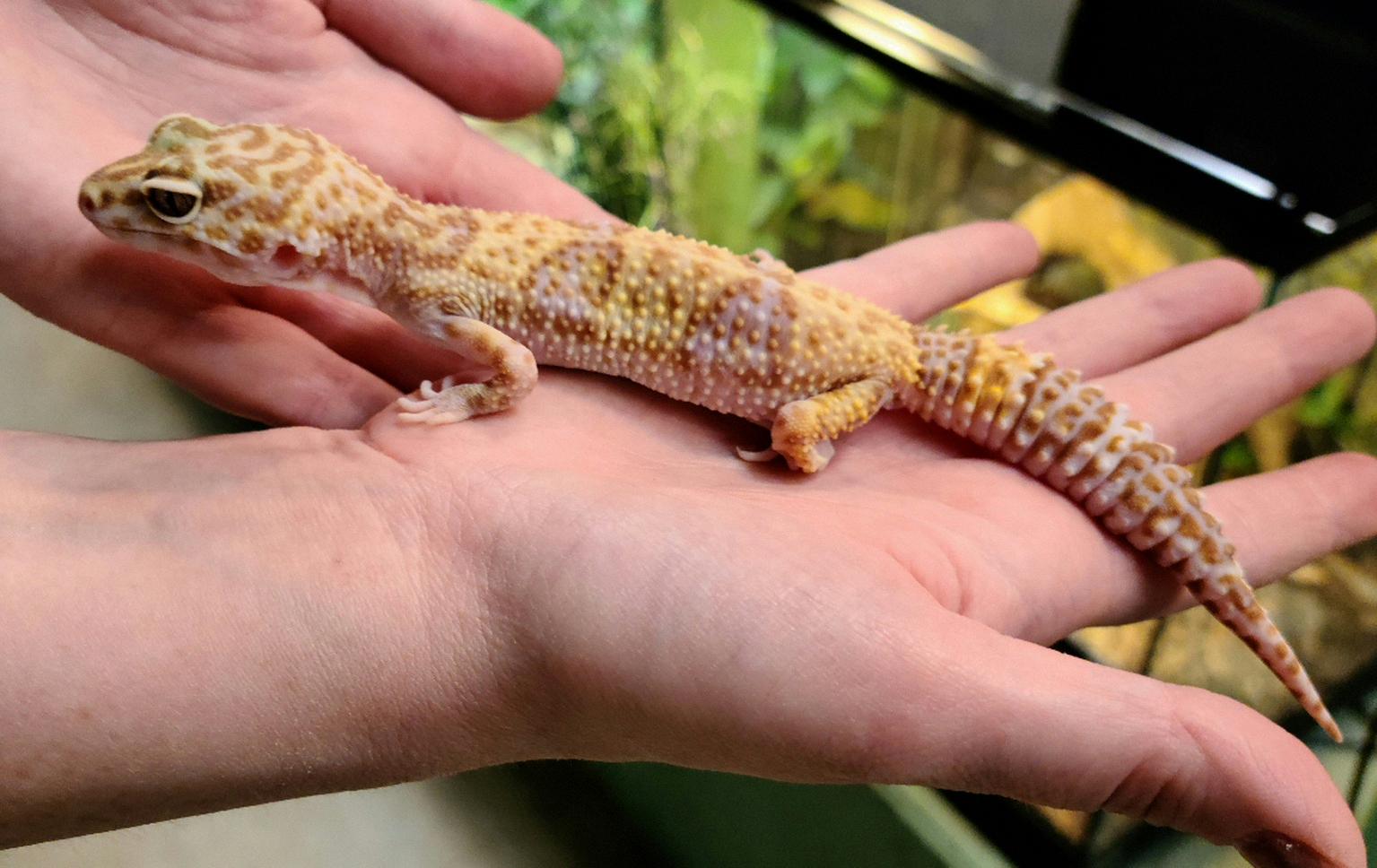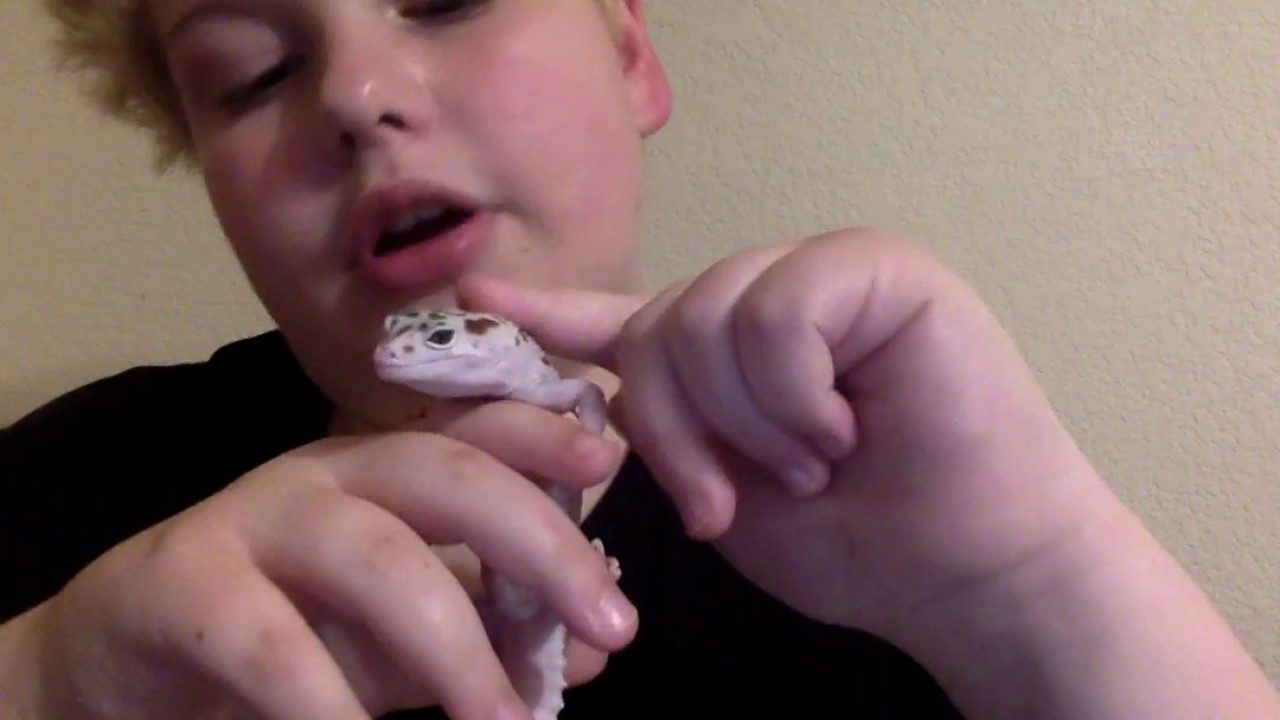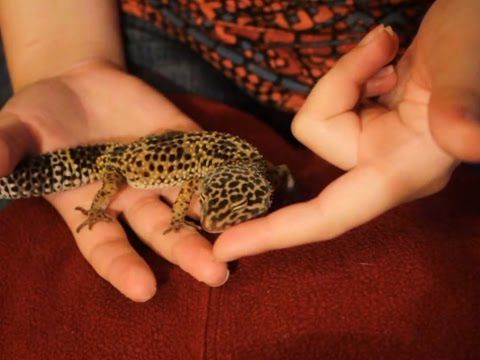Leopard geckos are becoming increasingly popular pets due to their docile nature, easy care requirements, and wide array of morphs and colors available. However, like any reptile, leopard geckos may behave skittishly or defensively when first brought home. With time and patience though, these geckos can become quite tame and handleable. Here is an overview of techniques and tips for successfully how to tame a leopard gecko.
Building Trust and Handling

When you first bring home your leopard gecko, it is important not to overwhelm the animal. Allow 1-2 weeks for the gecko to settle into its new habitat before attempting to handle it. Speak softly around the tank and move slowly when maintaining the enclosure to help the gecko become accustomed to your presence.
Once the gecko appears settled, you can begin handling sessions. Start by gently scooping up the gecko from the side or back. Never grab from above since this can be seen as a predator. Support the gecko’s body fully when lifting it and do not squeeze. Limit handling to 10-15 minutes 1-2 times per day during the taming process. Be sure to wash hands before and after handling to prevent transferring oils and scents.
During handling, hold the gecko securely but don’t restrain it. Let the gecko move from hand to hand if desired. You can also offer a treat, such as a mealworm, to help associate handling with a reward. If the gecko seems very nervous, return it to the enclosure and try again later. With regular, gentle handling most leopard geckos will learn to tolerate being held.
Habitat Setup

Ensuring the leopard gecko feels secure in its habitat is key to the taming process. These geckos prefer an enclosure with plenty of hiding spots to retreat to, as well as anchor points for climbing. Provide a minimum of three hides – one each on the cool side, warm side, and moist hide. Add branches, rocks, artificial foliage, and other décor for climbing and anchoring the gecko’s tail.
Also be sure the habitat is arranged to minimize stress. Avoid placing the tank in high traffic areas or exposing it to loud noises. Maintain proper hot and cool temperature gradients so the gecko can thermoregulate. Spot clean waste daily and deep clean the tank at least once per month. The more secure a gecko feels in its environment, the better it will respond to handling.
Positive Routine
Establishing a predictable, positive routine can greatly contribute to a leopard gecko accepting handling. Always move slowly when approaching or maintaining the enclosure. Gently scoop up the gecko, supporting its body properly. Hold it the same way each time and limit handling to 10-15 minutes per session.
Offer treats during handling to reinforce it as a positive experience. Return the gecko gently to its enclosure when done. Be consistent with this routine each time to establish trust with your pet. Avoid grabbing at the gecko or handling it in ways that may startle it. Over time, the gecko will learn handling is not harmful through this routine.
Patience Is Key

It is important to remember that each leopard gecko will tame on its own schedule. Some may only take a few weeks to become quite docile, while a shyer gecko may take months. Have reasonable expectations and don’t rush the process or force interaction. This will only cause more fear and defensive behaviors.
Instead, be patient and slowly build trust through short, gentle handling sessions, a secure habitat, and a consistent routine. With time, the gecko will learn you are not a threat. Be sure children understand proper handling techniques and supervise any interactions. While leopard geckos do require patience and care when taming, their calm nature makes this very manageable for a dedicated pet owner.
Conclusion
With their calm demeanor and manageable care needs, leopard geckos can make great pets when properly socialized. The key is going slow, allowing the gecko to become comfortable in its new home before extensive handling. Establish a predictable routine of gentle interaction paired with treats or reward. Optimizing the habitat setup also promotes security. Be very patient – it may take weeks or months for shyer geckos to tame down and tolerate handling. Apply these tips consistently, and your leopard gecko will soon eagerly look forward to attention!
FAQs About How to Tame A Leopard Gecko
How do I start the process of taming a leopard gecko?
Start by allowing your gecko to acclimate to its new environment for a week or two without handling. Gradually introduce yourself by placing your hand near the tank daily. Once your gecko seems comfortable, begin short, gentle handling sessions to build trust.
Can I handle my gecko right after bringing it home?
It’s best to allow your gecko to settle in for a week or two before handling. This minimizes stress during the transition. Let your gecko adjust to its new surroundings, and once it’s more comfortable, gradually start the taming process.
What are the signs that my gecko is stressed during handling?
Signs of stress in a gecko during handling include tail wagging, hissing, attempting to escape, biting, or excessive struggle. If you notice any of these behaviors, it’s crucial to stop handling and give your gecko more time to acclimate and build trust.
How often and for how long should I handle my gecko?
Start with short, 5-10 minute handling sessions a few times a week. As your gecko becomes more comfortable, gradually increase the duration and frequency. Aim for daily handling sessions of 15-20 minutes once your gecko is accustomed to being handled.
Are there specific techniques for handling a skittish gecko?
When handling a skittish gecko, move slowly and avoid sudden movements. Use a gentle touch and support their body to prevent stress. Begin with brief sessions and gradually extend the duration as your gecko becomes more relaxed and trusting of your presence. Patience is key to taming skittish geckos.



